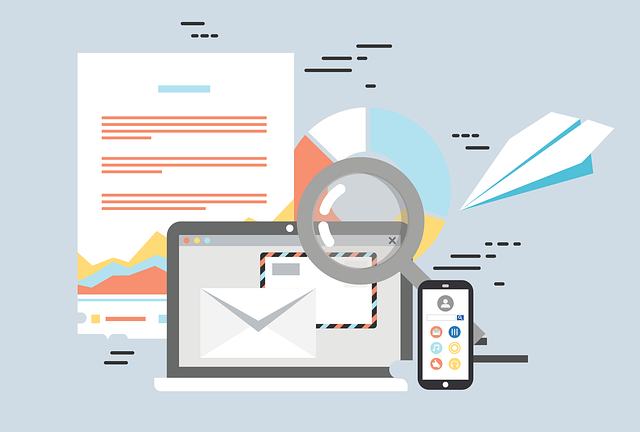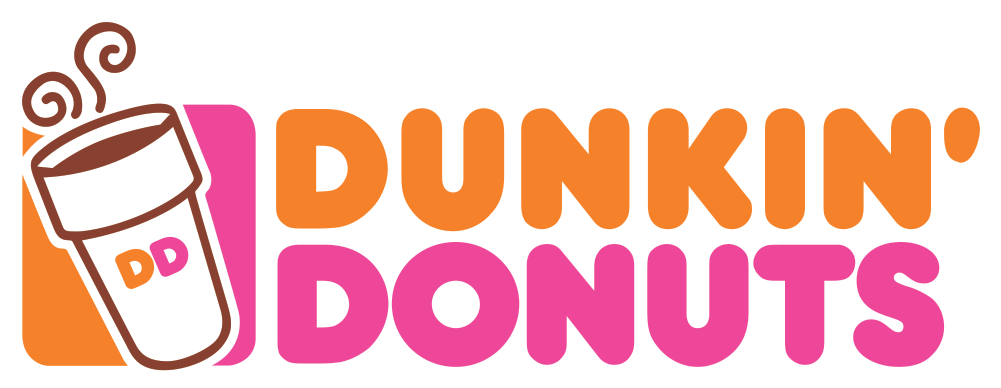Top 8 Best Tips to Become an Incentive Marketing Expert



by Daniela Maria Zabrautanu
June 15, 2023
Welcome to the exciting world of incentive marketing, where innovative strategies intertwine with human desires, resulting in remarkable outcomes for businesses and consumers alike. In this era of ever-evolving market dynamics, finding effective ways to captivate audiences and create lasting brand loyalty is paramount. That’s where marketing incentives and consumer incentives step onto the stage, offering a win-win proposition for all involved.
In today’s fast-paced, hyperconnected society, businesses face a multitude of challenges when it comes to grabbing consumers’ attention and inspiring them to take action. It’s no longer enough to simply promote products or services; companies must engage in a strategic dance, leveraging enticing incentives that strike a chord with their target audience. This is precisely where the art and science of incentive marketing come into play.
In this article, we present the top eight best tips to help you become an incentive marketing expert and harness the transformative power of rewards.
Jump to
What is incentive marketing?
Marketing incentives encompass a wide array of tactics designed to motivate potential customers, driving them to engage with a brand, make a purchase, or spread the word about a product or service. From discounts and special promotions to exclusive access and personalized experiences, these incentives spark curiosity and ignite a sense of urgency, compelling consumers to take that desired next step.
However, incentive marketing isn’t just about luring customers with attractive deals; it’s also about forging lasting connections through consumer incentives. Businesses recognize the inherent value of nurturing loyalty and building strong relationships with their audience. By understanding the desires, aspirations, and pain points of consumers, they can craft incentives tailored to their specific needs.
Is incentive marketing a strategy?
Incentive marketing is more than just a strategy—it’s a powerful approach that businesses employ to strategically drive desired behaviors and achieve their goals. With a carefully crafted incentive marketing plan, businesses can harness the innate desires and motivations of consumers, effectively influencing their decision-making process.
At its core, incentive marketing revolves around the concept of providing tangible or intangible rewards to encourage a specific action or behavior from the target audience. Whether it’s attracting new customers, increasing sales, boosting brand loyalty, or generating referrals, incentives serve as catalysts that propel individuals to take the desired actions.
Benefits of incentive marketing for Companies
Incentive marketing has emerged as a powerful strategy for companies looking to differentiate themselves in today’s competitive landscape. By offering rewards and incentives to customers and employees, businesses can unlock a myriad of benefits that contribute to their success.
- Strengthen your branding
By designing incentives that align with their brand values and resonate with their target audience, businesses can create positive associations and memorable experiences. Whether it’s through personalized digital rewards, exclusive access, or tailored experiences, incentives reinforce brand loyalty, making customers more likely to choose their products or services over competitors.
- Provides an edge in the battle for customer attention
Speaking of competitors, incentive marketing provides a valuable edge in the battle for customer attention and market share. In a crowded marketplace, where consumers are constantly bombarded with options, incentives stand out as attractive differentiators. By offering enticing rewards and perks, businesses can capture customer interest, sway purchasing decisions, and stay ahead of competitors who may not be leveraging incentive marketing strategies.
- Improve conversion rates
Moreover, incentive marketing has a direct impact on conversion rates. The power of incentives in motivating desired customer behaviors, such as making a purchase, providing referrals, or engaging with promotional campaigns, cannot be overstated. By providing tangible or intangible rewards, businesses increase the perceived value of their offerings and create a sense of urgency or excitement that drives conversions. Incentives act as persuasive triggers, nudging customers towards desired actions and ultimately boosting sales and revenue.
- Engage and motivate employees
Beyond customers, incentive marketing also plays a crucial role in engaging and motivating employees. By implementing incentive programs, companies can foster a positive work environment, increase employee satisfaction, and improve overall performance. Incentives serve as recognition for hard work and achievements, promoting a culture of excellence and incentivizing employees to go above and beyond. When employees feel appreciated and rewarded, they are more likely to remain loyal, productive, and actively contribute to the company’s success.
Related: Read about Employee Incentive Programs: The Ultimate Guide
- New opportunities for growth and expansion
By leveraging incentives strategically, businesses can attract new customers, retain existing ones, and tap into new markets. Incentives can be used to entice customers to try new products or services, cross-sell or upsell, and even enter emerging markets. Furthermore, incentive programs provide valuable data and insights into customer preferences and behaviors, enabling businesses to make informed decisions and refine their marketing strategies for future growth.

What is an incentive in marketing?
An incentive in marketing refers to a tangible or intangible reward or benefit offered to customers or target audience members to encourage a specific action or behavior. These incentives serve as motivators to engage individuals, make a purchase, provide referrals, or take other desired actions. Here are ten examples of incentives commonly used in marketing:
- Discounts: Offering price reductions or percentage discounts on products or services.
- Free Samples: Providing complimentary samples to allow customers to experience a product before making a purchase.
- Loyalty Programs: Rewarding customers with points or rewards for their continued engagement and repeat business.
- Referral Bonuses: Providing incentives to customers who refer friends, family, or acquaintances to the business.
- Exclusive Access: Granting early access or exclusive offers to loyal customers or members of a specific group.
- Contest Prizes: Offering the chance to win valuable prizes through competitions or sweepstakes.
- Cashback or Rebates: Providing a portion of the purchase price back to customers as a rebate or cashback.
- VIP Treatment: Offering premium services, personalized experiences, or special perks to valued customers.
- Frequent Buyer Programs: Awarding incentives based on the frequency or volume of purchases.
- Gift cards or vouchers: Gift cards provide flexibility and allow recipients to choose their preferred products or services. They serve as versatile incentives that can be used to reward loyal customers, incentivize referrals, or as prizes in contests and promotions. Gift cards not only encourage repeat business but also introduce new customers to the brand when they redeem the cards.
These are just a few examples of incentives in marketing, and businesses often employ a combination of these strategies to motivate their target audience and drive desired actions. The key is to understand the specific needs, preferences, and motivations of the customers to design incentives that resonate and generate engagement.
Interested in buying wholesale gift cards or gift cards in bulk? Get discounts on enterprise orders!
8 Best Tips to Become an Incentive Marketing Expert
1. Understand Your Target Audience:
To excel in incentive marketing, start by developing a deep understanding of your target audience. Dive into their desires, motivations, and pain points. Conduct market research, analyze consumer data, and leverage social listening tools to gain valuable insights. Armed with this knowledge, you can create incentives that resonate and generate meaningful connections. By understanding their preferences and needs, you can create incentives that resonate with them on an emotional level, increasing the likelihood of engagement and conversion.
2. Set Clear Objectives:
Establish clear and measurable objectives for your incentive marketing campaigns. Whether it’s increasing sales, driving customer loyalty, or boosting brand awareness, having specific goals in mind will guide your strategy and help you track progress. Align your incentives with these objectives to ensure maximum impact. Clearly define what you aim to achieve, whether it’s increasing sales, driving customer loyalty, or boosting brand awareness. Clear objectives serve as guideposts and help you align your incentives and strategies to ensure they are impactful and effective.
3. Craft Compelling Incentives:
Create incentives that stand out and entice your audience. Think beyond discounts and freebies; consider experiential rewards, personalized offers, or exclusive access. Tailor incentives to align with your target audience’s preferences and aspirations. Be creative, innovative, and consistently strive to deliver value that goes above and beyond expectations. Go beyond basic discounts and freebies. Consider unique and personalized rewards that align with your target audience. Whether it’s exclusive access, personalized experiences, or surprise gifts, ensure your incentives offer genuine value and stand out from competitors.
4. Leverage Technology:
Incorporate technology to streamline and enhance your incentive marketing efforts. Utilize customer relationship management (CRM) systems to track customer behavior and preferences. Leverage automation tools for personalized messaging and seamless delivery of incentives. Embrace digital platforms, mobile apps, and social media to engage with your audience effectively and provide convenient ways for them to access and redeem incentives.
5. Implement Gamification:
Gamification can add an exciting element to your incentive marketing campaigns. Imagine tapping into the human desire for competition and achievement by incorporating game-like elements such as points, leaderboards, and challenges. Gamification enhances engagement, encourages healthy competition, and increases the perceived value of incentives. It can be particularly effective as a motivational tool in driving customer loyalty and driving desired behaviors. Besides that, it also fosters a sense of fun and enjoyment, making incentives even more enticing.
6. Test, Analyze, and Optimize:
Continuously test and analyze your incentive marketing campaigns to understand what works and what doesn’t. Use A/B testing to compare different incentives, messaging, and delivery channels to determine what resonates best with your audience. Analyze data and gather feedback to refine your strategies and optimize future campaigns. Embrace a data-driven approach to make informed decisions. Continuously refine your strategies based on data-driven insights to maximize the impact of your incentives.
7. Nurture Customer Relationships:
Building strong customer relationships is crucial for long-term success in incentive marketing. Cultivate loyalty by providing exceptional experiences, personalized communications, and ongoing rewards. Implement loyalty programs, referral systems, or VIP treatment to foster a sense of exclusivity and make customers feel valued. By fostering loyalty and emotional connections, you can cultivate brand advocates who will not only engage with your incentives but also promote your brand to others.
8. Stay Updated and Evolve:
Incentive marketing is a dynamic field, constantly evolving with consumer preferences and market trends. Stay updated with the latest industry developments, emerging technologies, and innovative incentive strategies. Attend conferences, read industry publications, and network with other professionals to gain fresh insights and ideas. Embrace innovation, adapt to changes, and continually explore new ways to engage your audience effectively.

Real-world examples and success stories of incentive marketing
In today’s fast-paced digital era, businesses are constantly seeking innovative ways to engage customers and foster brand loyalty. One shining example of this is the remarkable success story of Dunkin’ Donuts and its mobile app, which has revolutionized the company’s incentive marketing efforts. By tapping into the power of mobile technology and incorporating enticing rewards, Dunkin’ Donuts has captivated its customer base, boosting engagement and creating lasting connections.
Let’s explore the journey of Dunkin’ Donuts and uncover the valuable lessons that can be gleaned from its mobile app success. Discover how this renowned coffee and baked goods chain harnessed the potential of mobile apps to enhance customer experiences and drive exceptional results.
1. Leveraging Mobile Apps:
The article highlights the success of Dunkin’ Donuts’ mobile app in driving customer engagement and loyalty. It emphasizes the importance of utilizing digital platforms and mobile apps to enhance incentive marketing efforts. Incorporating technology and creating user-friendly mobile experiences can significantly boost customer participation and satisfaction.
2. Gamification Elements:
The Dunkin’ Donuts app integrates gamification elements such as virtual scratch-off tickets and rewards points, creating a fun and interactive experience for customers. Incorporating gamification into incentive marketing can make the process more enjoyable and encourage active participation, ultimately driving customer loyalty and advocacy.
3. Data-Driven Optimization:
Dunkin’ Donuts utilizes data analytics to gain insights into customer behavior, preferences, and trends. By analyzing data collected through the app, the company can refine its incentive marketing strategies, personalize offers, and make informed business decisions. This emphasizes the importance of leveraging data to optimize incentive marketing campaigns and improve overall effectiveness.
4. Personalization and Customization:
Dunkin’ Donuts’ mobile app allows customers to personalize their orders and receive targeted promotions. This showcases the power of personalization in incentive marketing. Tailoring incentives and offers to individual preferences enhances customer experience and increases the likelihood of engagement and repeat business.
5. Continuous Innovation:
The article highlights the importance of ongoing innovation to stay ahead in the incentive marketing landscape. Dunkin’ Donuts continuously introduces new features, enhancements, and promotions within its app to keep customers engaged and excited. This demonstrates the need to stay updated, adapt to changing consumer preferences, and embrace innovation to maintain a competitive edge.
Related: 32 Corporate Gifts Ideas that will make you stand out
Conclusion
Incentive marketing is a powerful tool for driving customer engagement and loyalty. As demonstrated by Dunkin’ Donuts’ mobile app success, utilizing digital platforms and creating user-friendly mobile experiences can significantly boost customer participation and satisfaction. Incorporating gamification elements and leveraging data analytics to optimize campaigns can make the process more enjoyable and encourage active participation, ultimately driving customer loyalty and advocacy. Personalization and customization also play a crucial role in enhancing customer experience and increasing the likelihood of repeat business. Finally, continuous innovation is key to maintaining a competitive edge in the incentive marketing landscape. By following these key tips, you too can become an incentive marketing expert and drive success for your business.



Let’s have a chat
Your questions on incentive marketing
In summary, incentive marketing works because it aligns with fundamental human motivations, enhances perceived value, leverages reciprocity, fosters emotional connections, differentiates businesses, reinforces desired behaviors, and provides valuable data. By tapping into these psychological drivers, businesses can drive customer engagement, and loyalty, and ultimately achieve their marketing goals.
Incentive affiliate marketing is a variation of traditional affiliate marketing where affiliates are incentivized to promote products or services by offering additional rewards or incentives to their audience. In this model, affiliates go beyond earning commissions solely based on sales or referrals and can provide extra value to potential customers through incentives.
The incentives can take various forms, such as exclusive discounts, cashback offers, free gifts, or access to premium content. These additional rewards serve as motivators for potential customers to click on the affiliate’s promotional link, make a purchase, or perform a specific action, increasing the likelihood of conversion.
An example of an incentive is a retail store offering a 20% discount on all purchases made during a specific time period. In this case, the discount serves as an incentive to motivate customers to shop at the store and make a purchase. By providing a financial benefit, the store aims to increase customer engagement, drive sales, and foster customer loyalty. This type of incentive encourages customers to take immediate action and capitalize on the discount offer, creating a win-win situation for both the customer and the business.